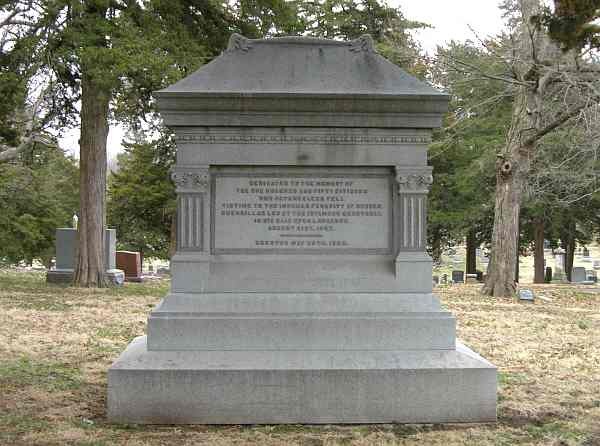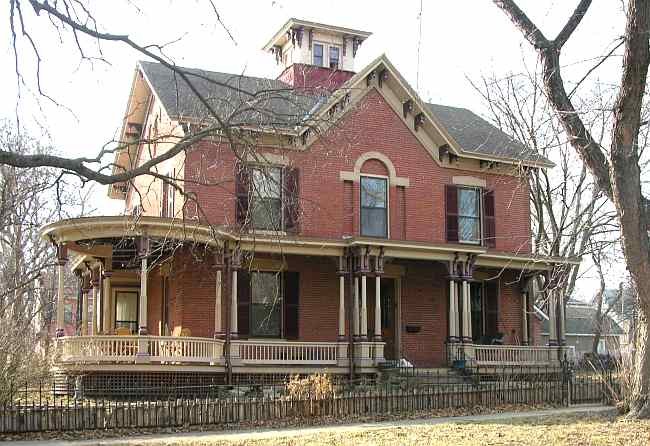Emily Hoyt's Boarding House, Quantrill's Raid
Introduction
Text-to-speech Audio
Images
This monument honors the victims of the raid and can be found in Oak Hill Cemetery.

This boarding house was spared during Quantrill's Raid when Emily Hoyt pleaded with the raiders not destroy her home because it was her only income.

Backstory and Context
Text-to-speech Audio
Before and throughout the Civil War, the residents of Kansas Territory and the state of Missouri engaged in attacks against one another that were largely driven by differences regarding the extension of slavery. The citizens of Lawrence were known to hold anti-slavery views, leading to two previous attacks on the city by residents of Kansas and Missouri during the territorial period supported the pro-slavery government at Lecompton. Because the issue of slavery's extension had already been settled by the time of Quantrill's 1863 raid, this horrific and vicious act can best be understood as a war crime committed by men who hoped to use the war to steal property and commit atrocities.
Quantrill led four hundred men who claimed to be aligned with the army of the Confederate states but might more accurately be labeled as guerrilla warriors acting on their own. The raiders included men like of Jesse James, his brother Frank, Cole Younger, and his brother Jim. These cowardly raiders chose the early morning for their attack on the residnets of Lawrence, burning buildings, stealing property, and dragging 183 boys and men from their homes and murdering them in front of their mothers, wives, and children. Nearly every building was set on fire, leaving only a handful of homes such as this boarding house intact.
